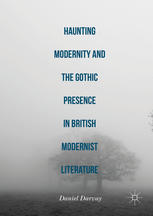

Most ebook files are in PDF format, so you can easily read them using various software such as Foxit Reader or directly on the Google Chrome browser.
Some ebook files are released by publishers in other formats such as .awz, .mobi, .epub, .fb2, etc. You may need to install specific software to read these formats on mobile/PC, such as Calibre.
Please read the tutorial at this link. https://ebooknice.com/page/post?id=faq
We offer FREE conversion to the popular formats you request; however, this may take some time. Therefore, right after payment, please email us, and we will try to provide the service as quickly as possible.
For some exceptional file formats or broken links (if any), please refrain from opening any disputes. Instead, email us first, and we will try to assist within a maximum of 6 hours.
EbookNice Team

Status:
Available4.7
6 reviewsThis book explores the complex relationship between British modernism and the Gothic tradition over several centuries of modern literary and cultural history. Illuminating the blind spots of Gothic criticism and expanding the range of cultural material that falls under the banner of this tradition, Daniel Darvay focuses on how late nineteenth- and early twentieth-century British writers transform the artifice of Gothic ruins into building blocks for a distinctively modernist architecture of questions, concerns, images, and arguments. To make this argument, Darvay takes readers back to early exemplars of the genre thematically rooted in the English Reformation, tracing it through significant Victorian transformations to finally the modernist period. Through writers such as Oscar Wilde, Joseph Conrad, Virginia Woolf, E. M. Forster, and D. H. Lawrence, this book ultimately expands the boundaries of the Gothic genre and provides a fresh, new approach to better understanding the modernist movement.